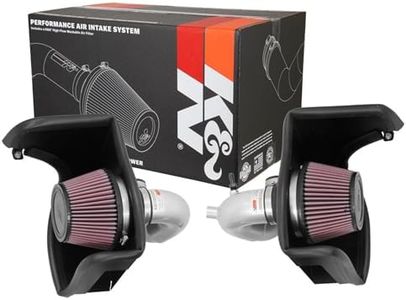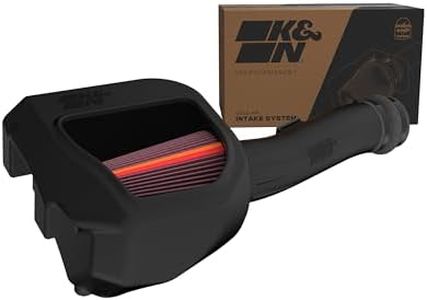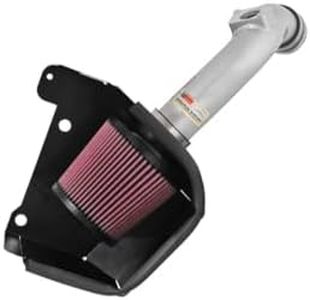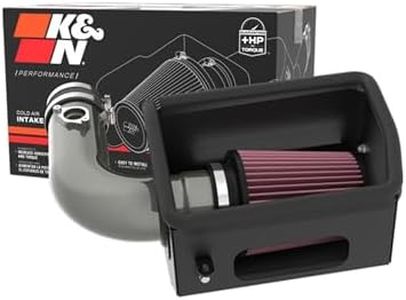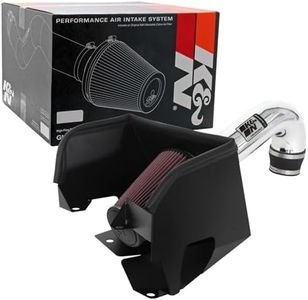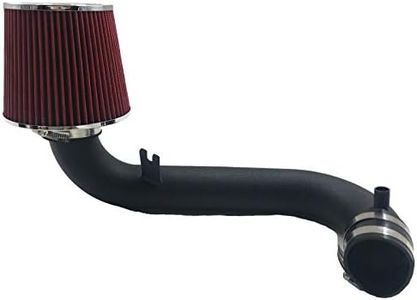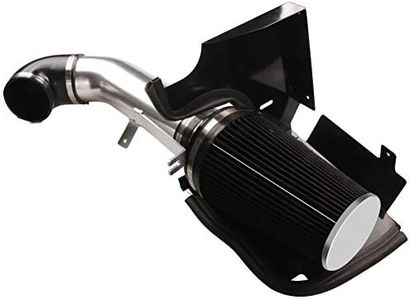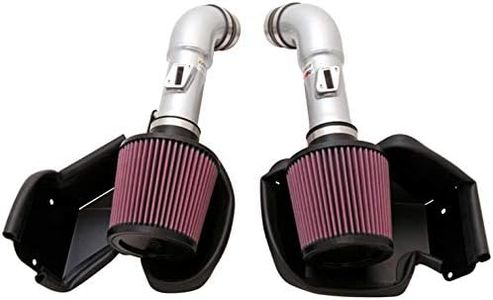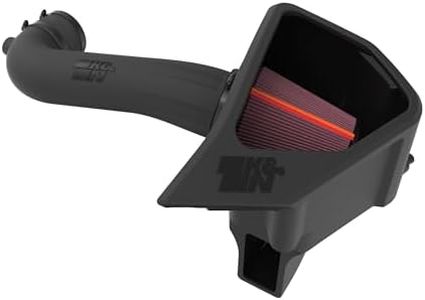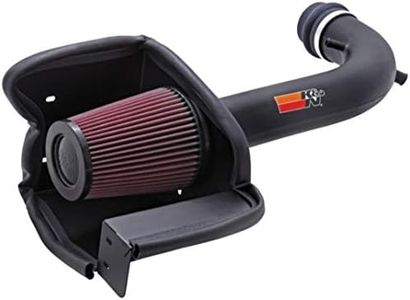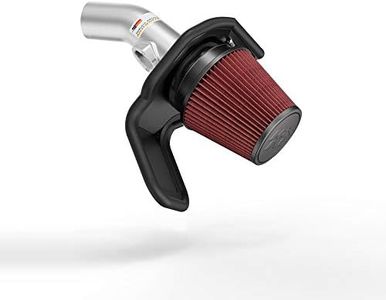We Use CookiesWe use cookies to enhance the security, performance,
functionality and for analytical and promotional activities. By continuing to browse this site you
are agreeing to our privacy policy
10 Best Cold Air Intakes
From leading brands and best sellers available on the web.Buying Guide for the Best Cold Air Intakes
Choosing the right cold air intake can significantly impact your vehicle's performance, efficiency, and even the sound of your engine. The primary aim of a cold air intake is to improve the airflow to your engine, which allows your vehicle to 'breathe' better and often results in more horsepower and torque. However, not every cold air intake will suit every vehicle or driving style, so knowing what to look for will help ensure you make a choice that matches your needs and expectations.MaterialThe material of a cold air intake pipe is crucial because it affects both durability and heat absorption. Common materials include plastic, aluminum, and sometimes carbon fiber. Plastic tends to insulate better, keeping intake air cooler, while aluminum is more durable and can look more attractive but may absorb more heat. Generally, if you want minimal heat absorption and a quieter sound, plastic is ideal for daily drivers, whereas aluminum might suit someone looking for durability and a sportier appearance.
Filter TypeCold air intakes come with different air filter types, such as oiled cotton, dry synthetic, or foam. The filter type affects how well particles are trapped and how often maintenance is needed. Oiled filters can be cleaned and reused but require occasional re-oiling. Dry filters are maintenance-friendly and good for areas with less dust. If low maintenance is important to you, go for a dry filter; if maximum filtration and reusability are key, choose an oiled cotton filter.
Fitment/CompatibilityFitment refers to whether the cold air intake is designed specifically for your vehicle's make, model, and engine configuration. An intake with perfect fitment ensures optimal performance and proper installation. Always verify compatibility by checking your vehicle's year, make, model, and engine specs so the equipment integrates perfectly. Choosing an intake tailored to your car avoids installation headaches and potential mechanical issues.
Airflow Path DesignThe design of the airflow path determines how efficiently air moves from the outside to your engine. Some intakes are shorter and keep the filter in the engine bay (short-ram), while others position the filter further from the engine to draw in cooler air (true cold air intake). Short-ram intakes are easier to install but may draw in warmer air, while true cold air intakes can increase performance more by providing cooler, denser air. If you drive in heavy rain or through water, be aware that lower filters can be more exposed and potentially risky. Pick a design that balances performance desires with your local driving conditions.
Heat ShieldingHeat shields or boxes around the filter help block hot engine air, which can reduce performance. Some cold air intakes include dedicated heat shields; others do not. Effective heat shielding is especially important if you want the best power gains in hot climates or heavy traffic. Choose an intake with good heat shielding for maximum effect, especially if consistent performance is a priority for you.
Ease of InstallationSome cold air intakes are designed for simple 'bolt-on' installation with basic tools, while others may require modifications to your car. If you prefer DIY installation with minimal hassle, look for systems marketed as direct-fit or bolt-on for your vehicle. If you’re comfortable with more involved installations, you may have more options, but always check the installation requirements before buying.
